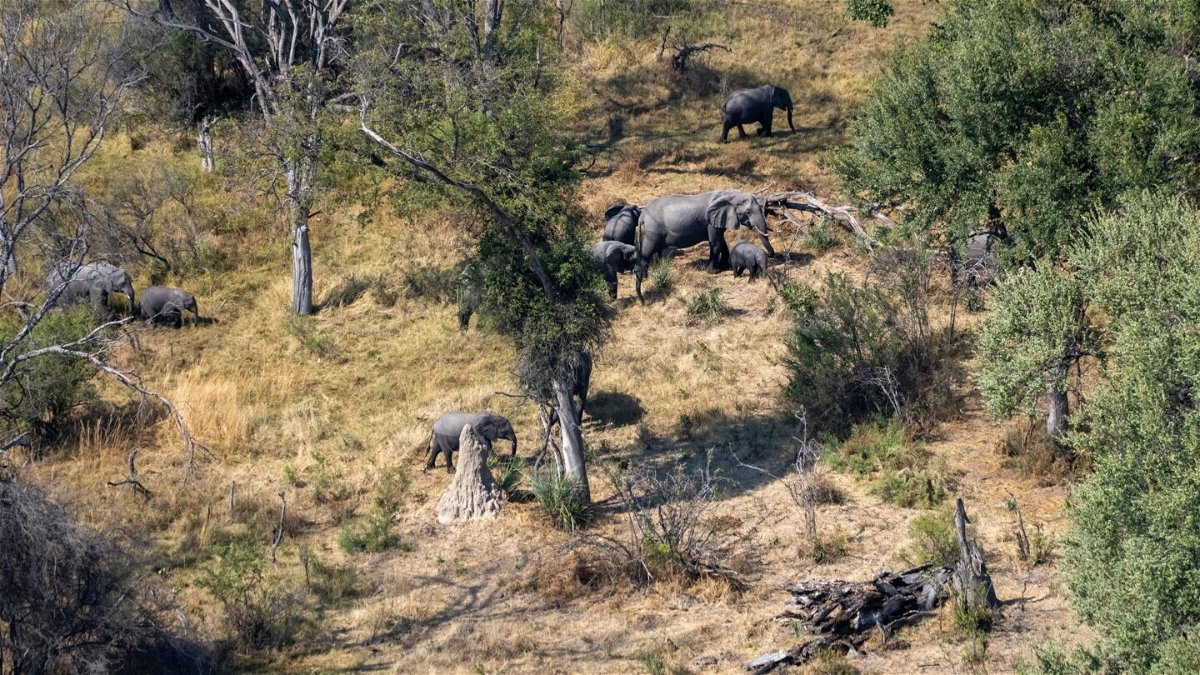A herd of orphan elephants could be the key to bringing back the woolly mammoth

Elephant Havens in Botswana is caring for orphans as part of a reintroduction program that will monitor progress over a decade.
By Ashley Strickland, CNN
(CNN) — Our planet has been through countless changes since it first came to be 4.5 billion years ago.
Different species have appeared and disappeared across millennia. Fossils left behind have created an enigma around the creatures that once walked Earth — and some scientists want to bring these animals back.
Fictional films such as “Jurassic Park” have covered this territory, but a biotech startup called Colossal wants to genetically engineer an Asian elephant-mammoth hybrid.
Big steps lie ahead for the company on its path to success, such as piecing together the genetic code, fertilizing an egg and culminating in the birth of an actual animal.
But a key question is whether such animals could survive if they roamed the Arctic tundra as their ancestors did thousands of years ago.
Fantastic creatures
Elephants live in complex societies governed by social hierarchy, so when these young animals become separated or orphaned, they can’t just be added to another herd.
And even if organizations rescue the baby elephants, reintroducing them to the wild takes time.
A wildlife foundation called Elephant Havens, based at the edge of Botswana’s Okavango Delta, has developed a long-term reintroduction project. Orphans are “soft released” into a 1,000-acre fenced site as they learn to survive without depending on humans.
Eventually, the bonded herd will make its way into the wild, where its progress can be monitored for the next decade.
The foundation is teaming up with Colossal to capture genetic data on the elephants and pair it with artificial intelligence, which could eventually be used to determine the best way to introduce hybrid mammoths into the wild.
Fossils and fireballs
About 125 million years ago, a cat-size mammal attacked a dinosaur three times its size.
Scientists still debate which creature might have won the fight had a volcano-driven mudslide not buried the two before a victor emerged.
The “once in a lifetime” fossil, found in northeastern China, perfectly preserves the clash between a badgerlike animal and a plant-eating beaked dinosaur, said paleobiologist Jordan Mallon, a research scientist at the Canadian Museum of Nature in Ottawa.
The finding contributes another piece of evidence that early mammals preyed on dinosaurs, rather than living in their shadows.
Across the universe
As celestial objects governed by gravity, planets tend to keep their distance from one another as they orbit stars. But astronomers using a Chile-based telescope spotted an unlikely “sibling” trailing in the same orbit as a Jupiter-like planet in a system 370 light-years away.
The cloud of debris, seen above, could be an incredibly rare world called a “Trojan” planet that’s in the process of forming or has already formed.
It’s not the only celestial oddball discovery shared this week. Astronomers have detected a new type of stellar object 15,000 light-years away that beams out radio waves every 22 minutes.
Consequences
As Earth warms due to the climate crisis, some butterflies may have a more difficult time than others.
The winged insects rely on warmth from the sun, but smaller butterflies with paler hues have difficulty regulating their body temperature as the heat increases.
Meanwhile, butterflies with larger wings and darker colors may have an easier time cooling off, according to new research. Lead study author Esme Ashe-Jepson of the University of Cambridge in the UK has a theory on why butterfly color matters.
The climate crisis has also been linked with more extreme weather events, which are expected to continue. And a phenomenon known as “underground climate change” is causing deformations of the ground beneath cities, according to a new study conducted in Chicago.
Wild kingdom
Female killer whales can live up to 90 years — long enough to experience menopause, which is rare in animals.
This longevity is decades beyond the reproductive years, and it may have something to do with a phenomenon called the grandmother effect. The older matriarchs are known to share preferred hunting spots and prey with the rest of their pods.
But it turns out that orca moms may also use their later years to engage in some helicopter parenting, according to a new study on killer whales off the coast of the Pacific Northwest of North America.
These grannies help their sons through the complexities of orca social life and protect them from risky fights with others.
Curiosities
Dig into these intriguing reads:
— A mysterious cylinder that washed up on the beaches of Australia’s Green Head sparked instant speculation, but officials said they believe it’s a piece of space junk.
— Heading to the movies this weekend? Discover the complicated story of J. Robert Oppenheimer, the creator of the atomic bomb, before watching director Christopher Nolan’s biopic, “Oppenheimer.”
— Threadlike worms that live inside certain insects can have a “zombifying” effect, taking control of their minds — and the worms are missing something that all other animals have.
— The first Olympian and the first mother-daughter duo to venture to space will be aboard Virgin Galactic’s inaugural private astronaut mission, set to launch in August.
The-CNN-Wire
™ & © 2023 Cable News Network, Inc., a Warner Bros. Discovery Company. All rights reserved.
